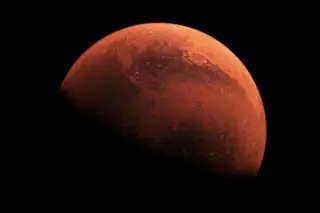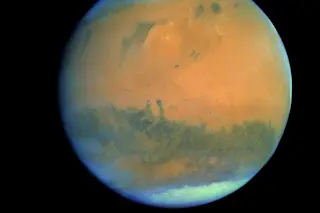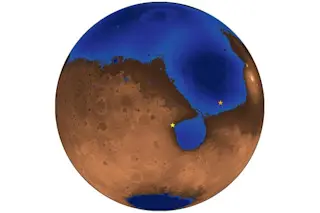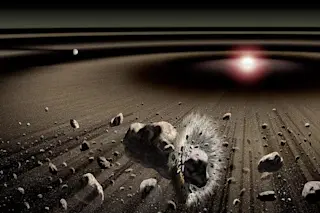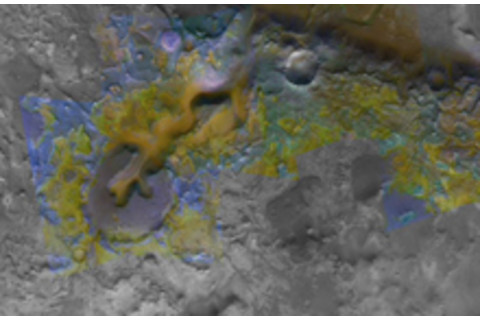
In another promising sign that primitive life could have once existed on the surface of Mars, researchers have found deposits of a mineral that suggest that the planet once had life-friendly bodies of liquid water. The mineral, carbonate, has previously been detected in only trace quantities on Mars, but new data from the Mars Reconnaissance Orbiter's spectrometer shows deposits in a rock outcropping in a region of valleys called the Nili Fossae.
Since acidic conditions can prevent carbonates from forming, the discovery suggests that the rocks were created in neutral-pH water that might have provided a cosy habitat for life [New Scientist].
Water ice currently exists on Mars, and over the past few years researchers have accumulated evidence of liquid lakes and streams in the planet's distant past.
Most evidence has pointed to a period when water on the planet's surface formed clay-rich minerals, followed by a time of drier conditions, when salt-rich, acidic water affected much of the planet. These later conditions would have proven difficult for any Martian life — if it ever existed — to endure or to leave any traces for scientists to find. Because carbonates dissolve quickly in acid, finding them shows at least some areas of the planet escaped the acid bath [SPACE.com].
In the new report, which will be published tomorrow in Science [subscription required], researchers say that the carbonate formed about 3.6 billion years ago. The mineral may have been formed when running water or groundwater came into contact with the mineral olivine, or it may have formed at the bottom of small, shallow lakes. Researchers say they haven't found any other big deposits of the mineral, leading them to guess that the conditions that allowed carbonate to form and persist in the environment were rare. But lead researcher Bethany Ehlmann still sees her discovery in a positive light:
"We've found at least one region that was potentially more hospitable to life" [TG Daily].
The new findings make the valleys of Nili Fossae a particularly enticing scientific beacon, but researchers will probably have to be content with studying it with orbiters for now; the Mars Science Lab, the next-generation lander and rover from NASA, is unlikely to touch down nearby in 2012.
Nili Fossae was initially considered as a possible landing site for the giant rover because it contains clays that must have formed in water.... "However, the reason the Nili landing site was not advanced was because it is too high in altitude - too risky for landing" [New Scientist]
, says Science Lab scientist John Grotzinger. Related Content: 80beats: New Evidence of Ancient Oceans on Mars 80beats: Martian Stones Suggest a More Recent Watery Past 80beats: Martian Gullies Were Formed by Liquid Water 80beats: 4 Billion Years Ago, Mars Was Wet and WildImage: NASA/JPL/JHUAPL/MSSS/Brown University





